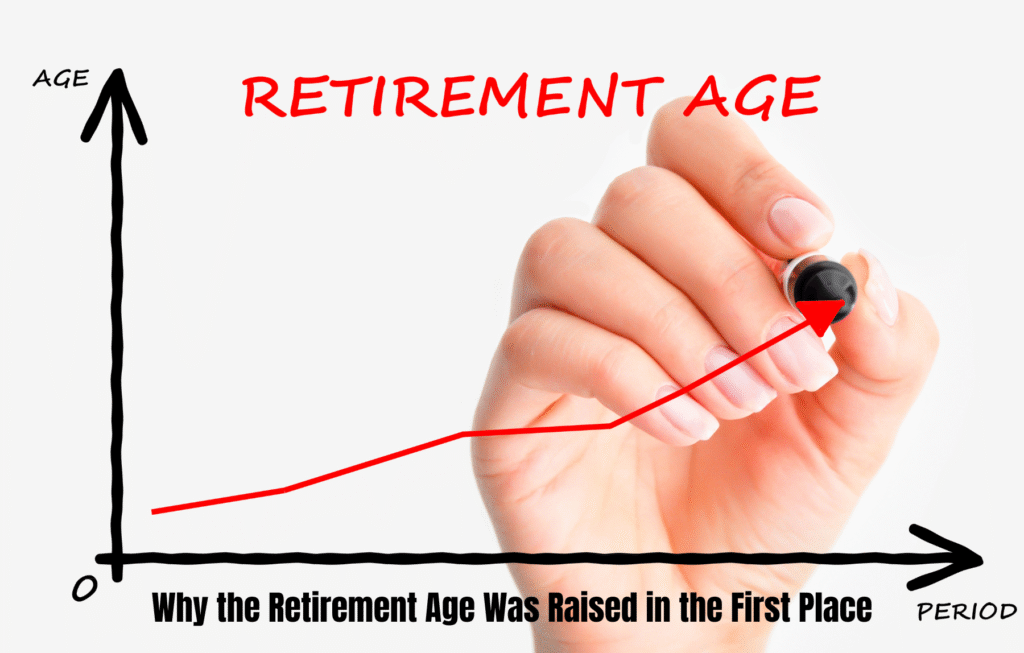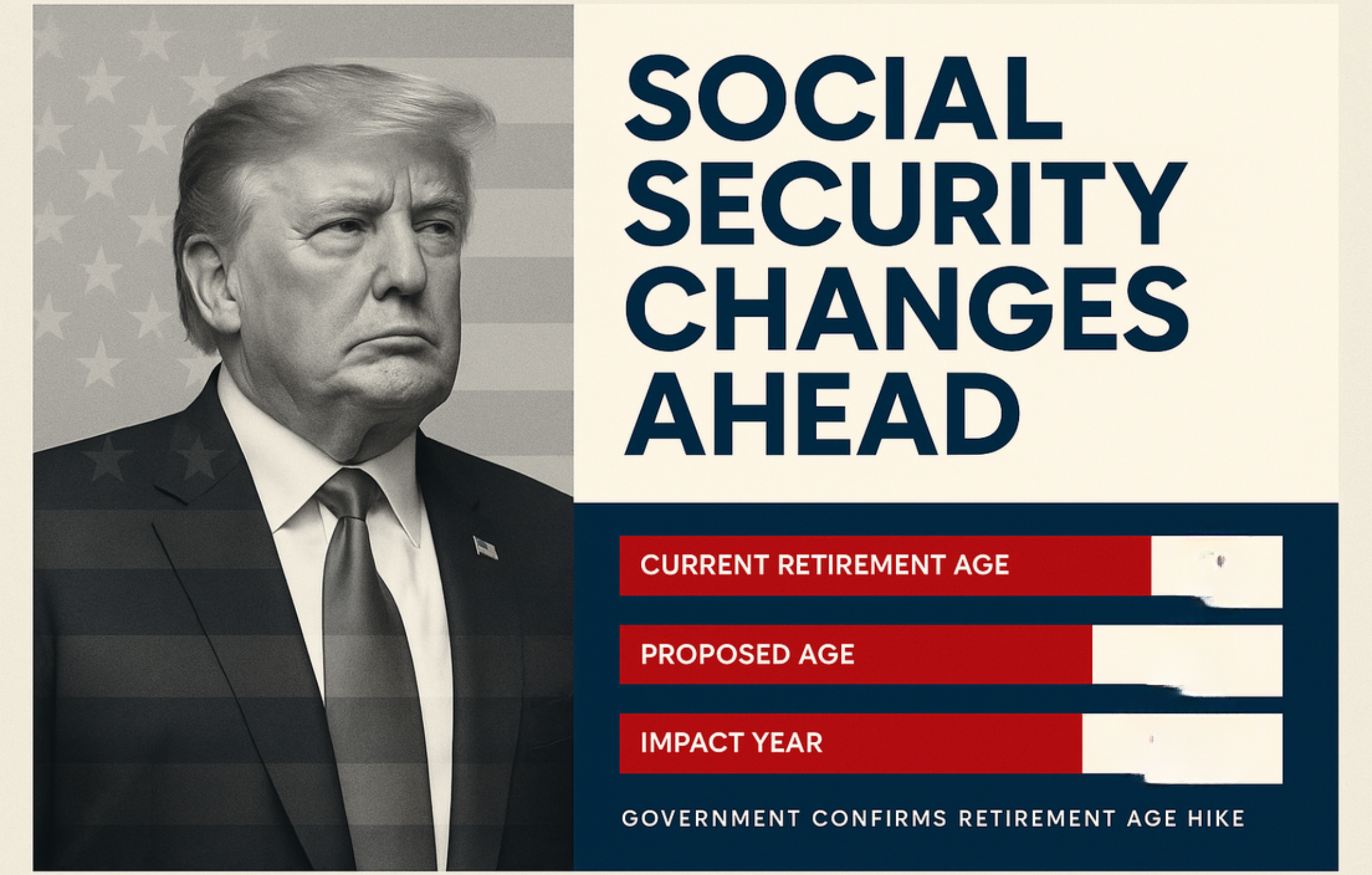The Headline: “Retirement Age Will Rise” — What Is Really Going On?
At first glance, the claim that “the government confirms plan to raise Social Security retirement age” sounds dramatic. But in reality, the story is more nuanced. Here’s what the evidence says:
- There is no credible confirmation from the Social Security Administration (SSA) or Congress that they are about to enact a new increase in the full retirement age (FRA) beyond what is already legislated.
- What is confirmed is that the FRA has been gradually rising as part of laws passed decades ago, and that by 2026, the FRA for those born in 1960 or later will reach 67.
- Speculation and proposals to raise the retirement age further circulate frequently — particularly as Social Security’s trust funds face long‑term financing pressures. But as of now, those remain proposals, not confirmed law. Indeed, Social Security’s commissioner recently publicly denied that an active plan is in place.
In short: yes, the retirement age is rising under laws already in effect, but there is no authoritative confirmation of a new, additional hike beyond that baseline. The “government confirms plan” framing leans into speculation more than fact.
Background: Why the Retirement Age Was Raised in the First Place

To understand the context, we need to go back to the 1983 Social Security amendments. That law introduced a gradual increase in the FRA, shifting it from 65 to 67 over a span of decades, to reflect improvements in life expectancy and reduce pressure on the Social Security system.
The logic was: people live longer, so paying full benefits starting at 65 becomes more expensive over a longer retirement. Moving the target helps balance the system’s finances.
Over time, the FRA has increased gradually (by two months per birth year in many cohorts). This was foreseeable and built into law.
Thus, the “rising retirement age” is not entirely new — it’s a continuation of a long‑term trend enshrined in federal law.
What is Already Changing (or Will Soon)
Although there is no new “surprise” increase confirmed, some key changes are already underway and will affect people approaching retirement:
- FRA for 1959 Birth Cohort
In 2025, individuals born in 1959 now have a full retirement age of 66 years and 10 months. That means, depending on their birth month, they will reach FRA between March 2025 and January 2026. - FRA = 67 for Those Born in 1960 or Later
Starting in 2026, anyone born in 1960 or after will need to wait until age 67 to receive full Social Security retirement benefits. This is the final step in the phase‑in from 65 to 67. - Early vs. Full vs. Delayed Claims
The earlier you claim (as young as 62), the lower your monthly benefit — permanently reduced. Delaying past FRA up to age 70 yields “delayed retirement credits,” raising your benefit amount. - The End of the Phase‑In
With the move to FRA = 67 for 1960+ births, the legislative schedule of increasing retirement age concludes its long glide path. That means further increases (if any) would require new legislation.
Thus, much of the “increase” is already baked in under existing law — not an abrupt change awaiting confirmation.
Why People Are Talking About Further Increases

Reasons the idea of a further raise keeps coming up include:
- Solvency Concerns: Social Security’s trust funds are projected to be depleted (or in danger) in the next decade or so under current projections.
- Demographic Pressure: With fewer workers per retiree and longer lifespans, the burden on the system increases.
- Political Debate: Some policy proposals include raising the retirement age (especially for higher earners) as part of broader reforms.
- Speculation in Media: Headlines sometimes present the raise as a fresh plan, which can confuse people into thinking it’s newly confirmed.
However, it’s essential to distinguish legislated, scheduled increases from new, proposed ones.
What SSA and Officials Are Saying Now
In recent statements, the SSA and its commissioner have pushed back against the notion that a new hike is imminent:
- In a media appearance, SSA Commissioner Frank Bisignano responded to speculation by clarifying that raising the retirement age is not being considered under the current administration.
- The official Social Security channels also reaffirmed that no changes to the FRA are currently on the table.
- That said, various reform blueprints (some from think tanks or policy groups) present the idea of higher FRA as one of many options — but these are not binding.
So far, there’s no formal legislative proposal with bipartisan support to raise the FRA beyond the scheduled 67.
Who Will Be Affected and When
The changes already in motion and proposals under discussion affect people differently depending on their birth year and retirement planning. Here’s how:
- For people born 1959, the change to full retirement age 66 years 10 months marginally shifts their expectations.
- For those born 1960 or later, the new baseline FRA of 67 becomes the norm.
- Anyone beyond those groups may be affected if new law is passed, though that’s speculative.
- Claimants who were relying on FRA 65 (a historic standard) will see that the 65 threshold no longer grants full benefits — they’ll need to wait longer.
- Early retirees (age 62) will continue to face permanent reductions; delayers (up to 70) get credits.
Given the change is gradual and predictable, many people have some time to adjust their retirement planning.
What the Change Means Financially

Raising or hiking the FRA affects lifetime Social Security benefits, monthly payout amounts, and retirement timing. Some of the key impacts:
- If someone claims too early, their monthly benefit is permanently cut relative to the full benefit they would have gotten at FRA.
- Delaying benefits beyond FRA can increase monthly payouts via delayed retirement credit.
- Because FRA is moving upward, many will either have to work longer or accept reduced benefits.
- Some projections estimate that those impacted by further increases could lose substantial lifetime benefits, especially if the increase is steep.
- For example, a CBO estimate (cited in media) suggests certain reforms could cost some individuals tens to hundreds of thousands of dollars in lost benefits across retirement — though that depends heavily on which cohorts and how reforms are phased.
Thus, although “raising the retirement age” sounds like a hard cutoff, its real effect is altering the tradeoffs between when to claim, how much you get, and how long you might need to work.
What You Should Do as a Retiree or Future Claimant
Because change is already happening, and further change is possible, here are prudent steps:
- Check your birth cohort and FRA
Know exactly what your full retirement age is (based on your birth year). - Use the SSA calculators / statements
The SSA provides online tools where you can see how benefits vary by claiming age 62 to 70. - Plan for flexibility
Don’t rigidly assume you can claim at 65 with full benefits — for many, 65 is no longer sufficient for full benefits. - Adjust retirement savings accordingly
If retirement may be delayed or benefits somewhat reduced, boosting personal retirement savings, pensions, or investments helps fill the gap. - Stay attentive to proposals
Monitor Congressional or SSA announcements. Any genuine change to FRA would require legislation and typically would be phased in, not sudden. - Factor health and career conditions
Some people cannot or should not work longer (health, type of job). For them, understanding how early claiming affects benefits is especially important. - Seek financial advice
A retirement planner or Social Security specialist can help optimize when to claim given your financial situation, life expectancy, and other income sources.
Why Headlines Often Mislead
Many media headlines proclaim “Government Confirms FRA Increase” to attract attention. But often:
- They conflate scheduled, already legislated increases with new, proposed policies.
- They treat policy proposals or academic suggestions as though they are already decided.
- They omit nuance — that official denial or clarification exists, or that any further increase would require new law.
One illustrative case: after a TV interview, a host mischaracterized remarks so that the commissioner seemed to be confirming further increases — but the SSA’s official response quickly clarified that no such plans exist.
Thus, when reading headlines, always look for whether the change is already legislated, or merely proposed.
Bottom Line
- The retirement age is rising, but not because of a brand‑new plan — it’s part of a gradual schedule established decades ago.
- By 2026, full retirement age (FRA) will be 67 for anyone born in 1960 or later.
- As of now, there is no confirmed new government decision to raise the FRA beyond that baseline.
- Speculation and proposals persist, often fueled by concerns about Social Security’s long‑term finances — but those remain proposals, not law.
- Anyone planning retirement should adapt to the rising FRA, plan for flexibility, and stay informed about legislative developments.
FAQs
Q1: Is the government confirming a new Social Security retirement age increase?
A1: No. The government has not confirmed any new increase beyond the existing law, which already phases in a full retirement age of 67 for those born in 1960 or later.
Q2: What is the current full retirement age (FRA) for Social Security?
A2: FRA depends on your birth year. For those born in 1960 or later, it’s 67. For earlier cohorts, it gradually rises from 66 to 66 years and 10 months.
Q3: When does the FRA officially reach 67?
A3: Starting in 2026, anyone born in 1960 or later will need to wait until age 67 to receive full Social Security retirement benefits, completing the phase-in.
